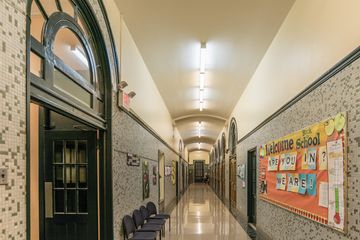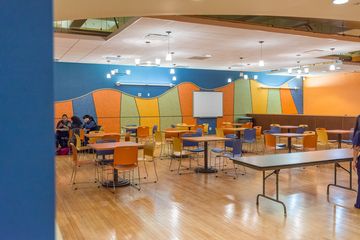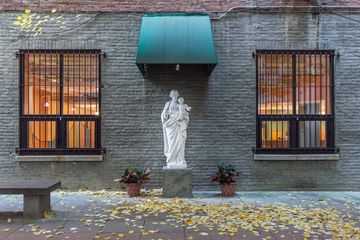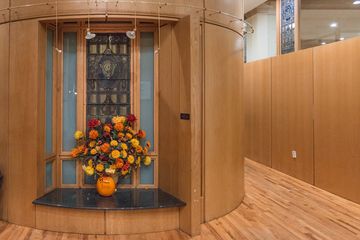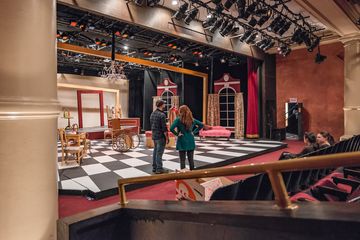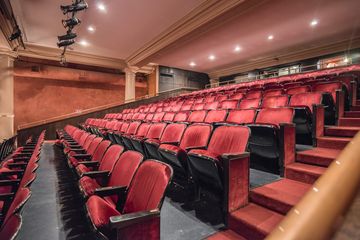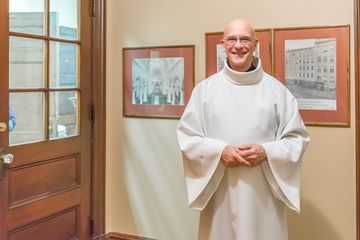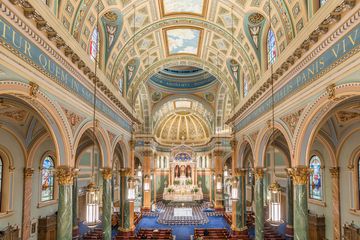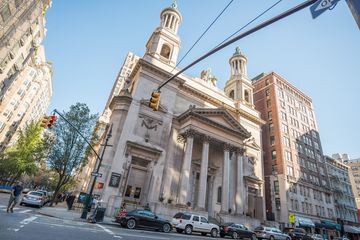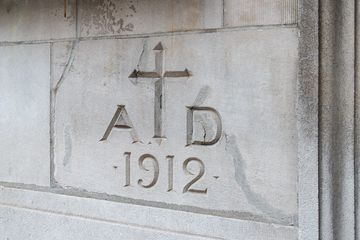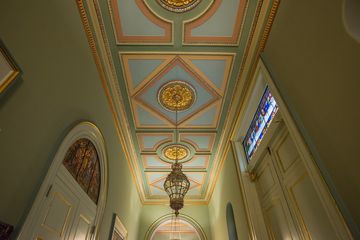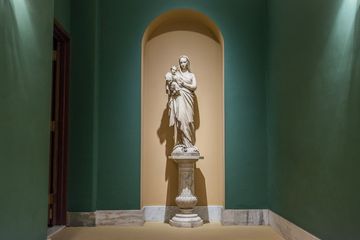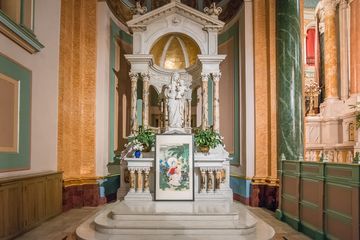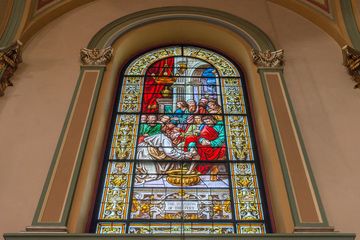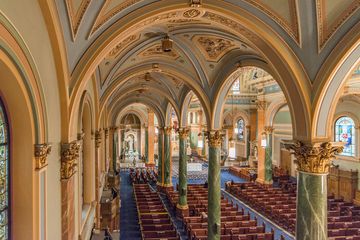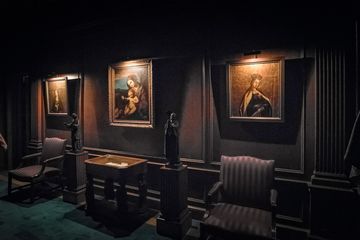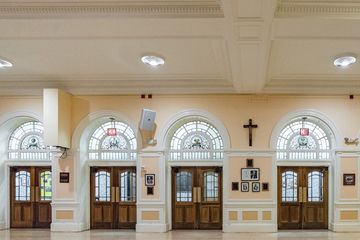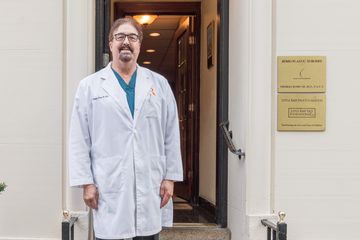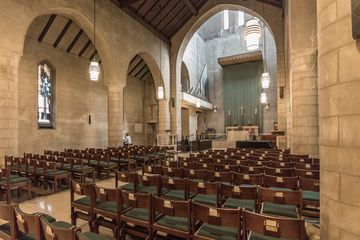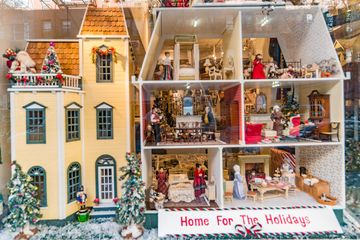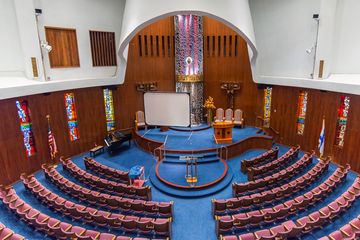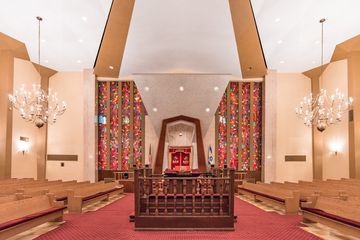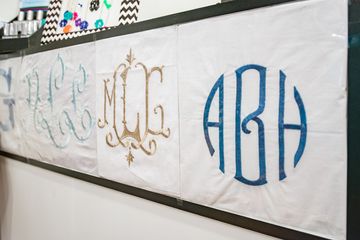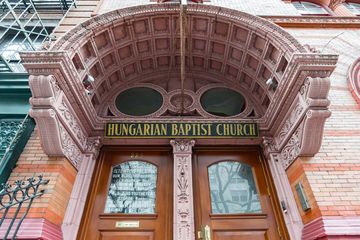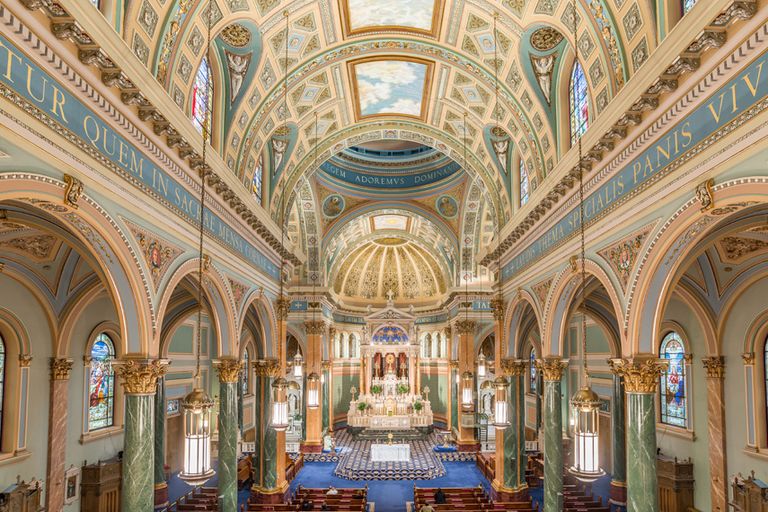
I thought that perhaps I was immune to the glorious interiors of New York City churches after exploring seventy-five streets, but St. Jean Baptiste Catholic Church proved me wrong. The sanctuary is absolutely exquisite, with shimmering stained glass, towering columns, and majestic balconies. I met with Barbara O’Dwyer Lopez, the President of the Parish Council, and Father John Kamas who together wrote a beautiful book about the history of St. Jean, making them the perfect people from whom to receive a tour of the building.
St. Jean Baptiste has been serving the community for a long time. The church has existed since 1882, though it moved from just down the street to its current corner location in 1912. Barbara pointed at the stained glass, mentioning that it came from pre-World War I France. She also informed me that the church and school are still associated with the same sisterhood of nuns, the Congregation of Notre Dame, as they were at the start. “Teeming with history, this place,” she said with a smile.
Numerous choirs are associated with the church. “Music has always been a very fine tradition with us,” Barbara explained before listing the parish choir, children’s choir, and professional singers whose voices have echoed off the church’s walls. Orchestras come from all around to perform in St. Jean’s impressive sanctuary and, of course, the choir from the St. Jean Baptiste High School also calls the church home.
I inquired about the congregation and discovered that it has been steadily growing in recent years. St. Jean is emphasizing more attendance with children, as the neighborhood has become populated with young families. Many members of the congregation come from the busy hospital communities nearby where the church also sends chaplains. In addition to the constant flow of people who stop in to pray in the main sanctuary, Barbara mentioned that the church grounds are always buzzing with activity. “We have a very busy campus here,” Barbara said, and led me through the church to another part of the building.
The girls’ school was our next stop. Like the church, it is over one hundred years old. Barbara informed me that the students come from each of the five boroughs, with many from ethnic minorities. Barbara was proud to tell me that there is a 100% college acceptance rate at graduation. Via the large auditorium, Barbara took me through the school courtyard to show me the theater whereupon I was introduced to Tony, the manager of the community center. In the same complex as the theater, there is a dance studio where different groups, from adult ballroom dancing to children’s hiphop, rehearse. We also passed a meeting room occupied by a toddler playgroup and saw signs for Applause, an educational Broadway music program based at St. Jean’s. I continued to be impressed by the diversity of groups that were welcomed into St. Jean’s facilities, how each space appeared to be used to its full potential, and the lovely people involved throughout. As Barbara added jovially, “There’s hardly an empty minute!”
The theater itself is no exception – The Hewitt School rents out the theater, as well as small theater groups like the Blue Hill Troupe, which produces a lot of Gilbert and Sullivan operettas. While observing the Hewitt girls rehearsing the production of Le Malade Imaginaire by Moliere, Barbara directed my gaze to the floor that opens up to reveal an orchestra pit. Not only does the church provide a wonderful resource to performance groups around the city, but the revenue from the theater helps support the church’s upkeep and other activities. It is a beautifully symbiotic relationship: “The theater provides stability for the church.”
When we returned to the church proper, I had the pleasure of meeting Father Kamas. In his warm, gentle manner he spoke of how his relationship with the church goes back many years. He once attended the grammar school that was affiliated with St. Jean Baptiste, and the nun who used to be his eighth grade teacher now lives in the rectory with him. “I feel very at home here,” he emphasized. The church has changed since he was young, but for the better. “When I was a kid, it was very dark,” John said, but then the church underwent a twelve year renovation beginning in 1988. During this time the interior was redone and the roof was patched. The church is, unsurprisingly, a landmark building; therefore, everything had to be replaced using the same materials. It was then that the theater and community center were built.
